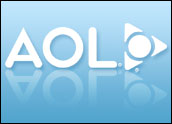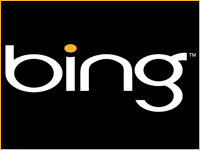
AOL on Tuesday confirmed it has agreed to acquire technologyblog TechCrunch, following a crescendo of rumors surrounding thepossible deal.
News of the deal was released on stage at TechCrunch Disrupt, a gathering being held inSan Francisco through Wednesday.
“TechCrunch and its team will be an outstanding addition to thehigh-quality content on the AOL Technology Network, which is now amust-buy for advertisers seeking to associate their brands withleading technology content and its audience,” said Tim Armstrong, AOL’schairman and CEO.
“This represents a compelling opportunity to extend the TechCrunchbrand while complementing the great work of sites like Engadget andSwitched,” said Heather Harde, CEO of TechCrunch.
More About the Deal
TechCrunch will remain headquartered in San Francisco and willoperate as a wholly owned AOL unit.
Terms of the deal were not disclosed, although speculation has peggedTechCrunch’s price at around US$50 million or so.
AOL already owns 85 sites, including Engadget, Switched, and TUAW, TheUnofficialApple Weblog, which came along with its acquisition of Weblogs for $25million in cash back in 2005.
TechCrunch brings two items to the table: A global network of blogsand its conferences and events business.
The TechCrunch properties include MobileCrunch, CrunchGear,TechCrunchIT, GreenTech, TechCrunchTVand the CrunchBase database.TechCrunch’s events include the Disrupt series, the Crunchies awards,and various meetings of industry leaders worldwide.
TechCrunch’s Future With AOL
Could selling to a larger corporation damage TechCrunch’s credibility as a news source? AOL may find it difficult not to get involved withTechCrunch’s coverage, Laura DiDio, principal at ITIC, told theE-Commerce Times.
“Acquiring companies always say they’re going to be hands-off, butinexorably you get little suggestions coming down through thepipeline,” DiDio pointed out. “They never leave you completely alone.On the other hand, you don’t want to mess with success,” she added
Both Michael Arrington, founder and co-editor of TechCrunch, and AOLCEO Armstrong indicated that the TechCrunch team would remain in placeunder AOL’s ownership.
“TechCrunch and its team will be an outstanding addition to thehigh-quality content on the AOL Technology Network,” Armstrongremarked.
It’s All About Quality
“Michael and his colleagues have made the TechCrunch network a bywordfor breaking tech news and insight into the innovative world ofstart-ups, and their reputation for top-class journalism preciselymatches AOL’s commitment to delivering the expert content critical tothis audience,” AOL’s Armstrong said.
Those sentiments about quality were also expressed by TechCrunch’sArrington and Harde.
However, earlier this year, Bill Wilson, the architect of much of AOL’s contentstrategy, left the company; then in August came news that Marty Moe, senior vicepresident for AOL Money & Finance, News & Sports, would step downafter nine years. The two were seen as the driving force behindquality content at AOL.
Wilson was replaced by David Eun, who came over from Google.
Whether AOL can now commit to quality and whether Arrington, who hasremained fiercely independent, will be able to work with AOL for longremain to be seen.
“There would surely be some impact on editorial at TechCrunch, and Isuspect Arrington wouldn’t be there longer than necessary,” GregSterling, founding principal at Sterling Market Intelligence, told theE-Commerce Times. “On the other hand, he might perhaps seek a largerrole at AOL generally.”
A Marriage Made Where, Exactly?
Granted, the acquisition mayhelp TechCrunch CEO Heather Harde further her ambitions plans.
It’s long been known that Harde, a merger and acquisitions specialistat News Corp. before she joined TechCrunch, has wanted to consolidateother smaller sites under TechCrunch’s umbrella.
“This represents a compelling opportunity to extend the TechCrunchbrand while complementing the great work of sites like Engadget andSwitched,” Harde said when AOL announced TechCrunch’s acquisition.”Our contributors and our audiences can look to the future withexcitement about what we can build when we have the significantresources of AOL behind us,” she added.
“This gives AOL a chance to stay in the game,” ITIC’s DiDio pointedout. “It’s good for TechCrunch because AOL is bigger, even though it’shad problems.”
Problems, indeed. AOL seems to have mastered the ancient art of losingmoney hand over fist. In its Q2, 2010 results, announced in August, AOL said its advertising and subscriptions wereboth down 27 percent year over year; total revenues fell 26 percentyear over year; and cash provided by continuing operations and freecash flow were both down 44 percent year over year.
AOL attributed about $70 million of its $110 million year-over-yearfall in advertising revenues to the impact of its initiatives inimproving the customer experience and optimizing its productofferings.
Still, the acquisition of TechCrunch may perhaps give AOL a leg up asit struggles to secure its future.
“I think the biggest danger for AOL, when they’ve been under pressurefor several years now, is to stand still and maintain the status quo,”ITIC’s DiDio said. “They have to keep on doing things.”























































Social Media
See all Social Media